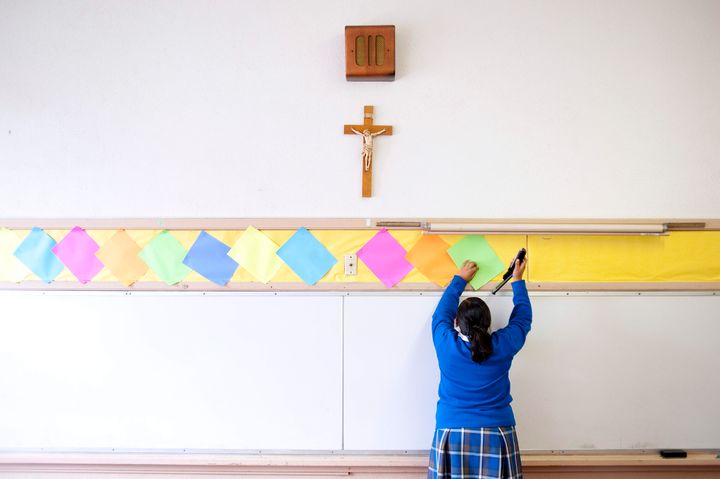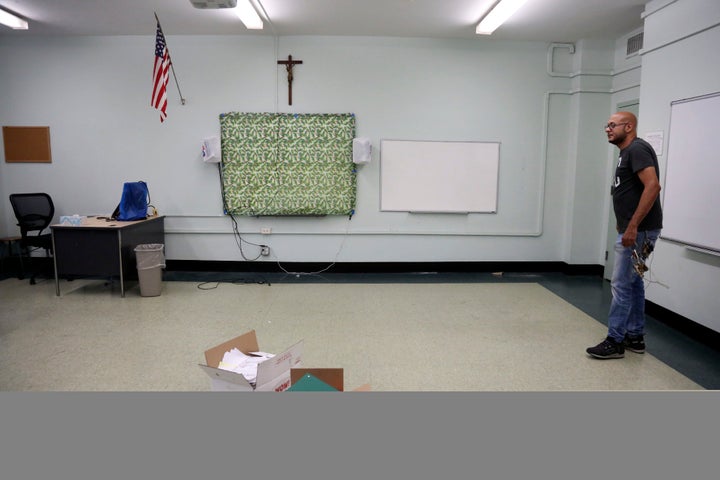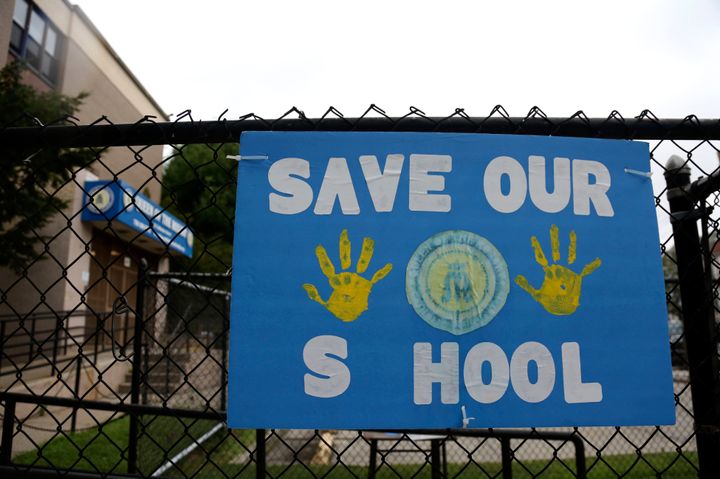[ad_1]
NEW YORK (AP) — Enrollment in Roman Catholic schools in the United States dropped 6.4% from the previous academic year amid the pandemic and economic stresses — the largest single-year decline in at least five decades, Catholic education officials reported Monday.
Among the factors were the closure or consolidation of more than 200 schools and the difficulty for many parents of paying tuition fees that average more than $5,000 for grades K-8 and more than $10,000 for secondary schools, according to the National Catholic Educational Association.
John Reyes, the NCEA’s executive director for operational vitality, said the pandemic has been an “accelerant” for longstanding challenges facing Catholic education.
Between the 2019-2020 school year and the current year, nationwide enrollment dropped by 110,000 to about 1.6 million students. Back in the 1960s, enrollment was more than 5 million.
With the recent wave of closures, there are now 5,981 Catholic schools in the United States, compared with more than 11,000 in 1970.
Reyes said they disproportionately impacted urban communities where significant numbers of Black children, including many from non-Catholic families, attended Catholic schools.

Indeed, some of the largest enrollment losses were in big-city dioceses, including 12.3% in Los Angeles, 11.1% in New York and 8.2% in Chicago.
The only big-city dioceses that saw significant increases were in Western cities with large Hispanic populations: up 5.5% in Las Vegas, 4.6% in Denver and 2.4% in Phoenix.
Elementary and middle schools were harder hit with a collective enrollment decline of 8.1%, compared with a 2.5% decline for secondary schools. Pre-kindergarten programs saw the steepest drop, 26.6%
“Declines in enrollment at the primary grade levels may lead to a delayed but significant impact on secondary school enrollment within the next five to 10 years, proving potentially disastrous for secondary school viability,” the NCEA said in an analysis of the new data.
Reyes said tuition revenues do not fully cover the cost of Catholic schools’ operations, and yet they are still burdensome to many families. He said one-third of families with children in elementary school apply for financial assistance, and 47% of families with children in secondary school.

Reductions in professional staff — teachers and administrators — were more modest than the enrollment drop, with a 2.3% decline from the previous year. That enabled the nationwide Catholic system to maintain a student-teacher ratio of 11 to 1, substantially lower than in most public schools.
Reyes said one reason for the relatively modest reduction in staff size was the use of funds from the federal Paycheck Protection Program in the spring of 2020. Without additional outside support going forward, he added, there is potential for severe staffing reductions as well as continued enrollment declines.
“I can’t say that a bounce-back is guaranteed” when the pandemic ends, Reyes said.
Often last year when plans for closures were announced, parents and alumni launched campaigns — mostly unsuccessful — seeking to keep those schools open. Even in some cases where dioceses had financial resources available, school officials responded that long-term enrollment trends and sometimes a need for costly renovations made it unfeasible.

They included some storied educational institutions such as The Institute of Notre Dame, a girls’ school in Baltimore founded in 1847 and closed last summer to the dismay of alumnae like House Speaker Nancy Pelosi.
Previously the largest one-year enrollment drop for U.S. Catholic schools was 5.8% in 1971. The NCEA said it does not have comprehensive enrollment data for years before 1970.
Other significant annual declines were a 2.7% drop in 2003 at the peak of the clergy sex abuse crisis and 3.5% in 2008 amid the Great Recession, according to the NCEA.
Calling all HuffPost superfans!
Sign up for membership to become a founding member and help shape HuffPost’s next chapter
[ad_2]
Source link